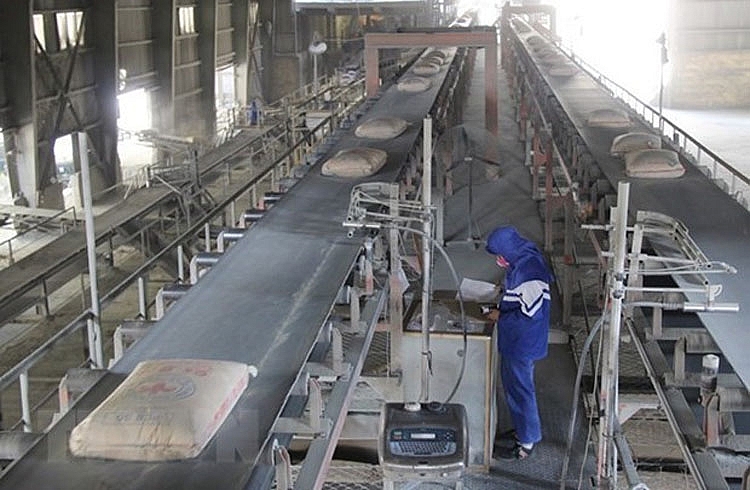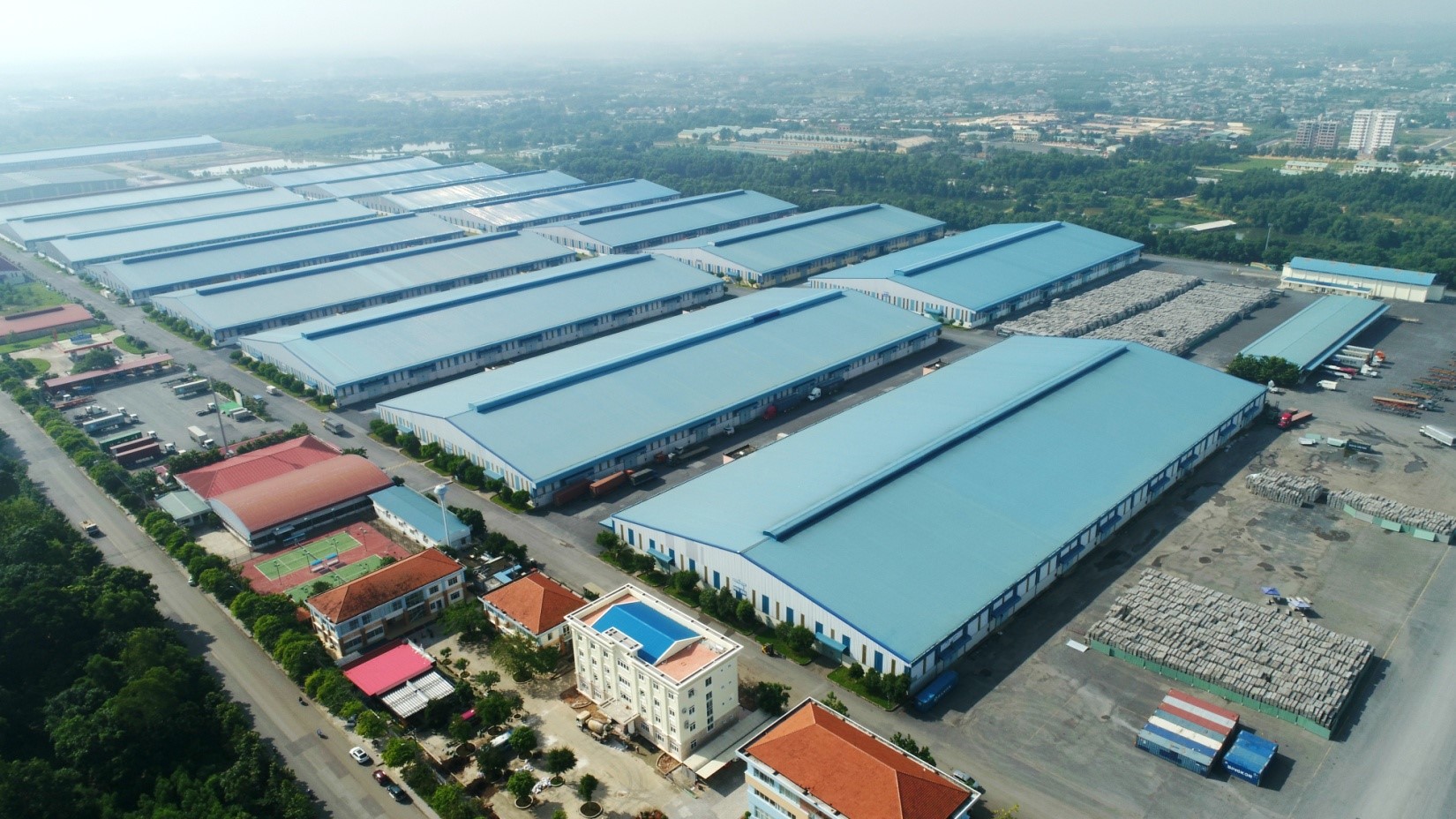In the first eight months of 2021, the country’s cement product consumption is estimated to reach about 70.7 million tons, up 4% over the same period in 2020. Export output is estimated at 27.23 million tons, up 12% over the same period last year. last year.
Since May, the domestic cement consumption situation has been affected by the COVID-19 epidemic, many localities have applied social distancing, making it difficult to transport goods, and construction works have stalled. .

Data from the Department of Building Materials-Ministry of Construction shows that, in the first eight months of 2021, cement product consumption is estimated to reach about 70.77 million tons, up 4% over the same period in 2020; in which, consumption in the domestic market reached about 43.54 million tons, down about 5% over the same period in 2020. However, export output was estimated at 27.23 million tons, up 12% compared to the same period last year. with the same period.
Particularly in August, cement consumption is about 8.09 million tons, down about 8% over the same period last year; in which, domestic consumption is about 4.97 million tons, export is 3.12 million tons.
According to Mr. Nguyen Quang Cung – Chairman of the Vietnam Cement Association (VNCA), the total volume and value of cement and clinker exports is maintaining a high increase over the same period thanks to the growth from January to April. These are the months before the fourth wave of COVID-19 resurgence.
But from the end of April until now, the outbreak of the disease has caused a series of construction projects in large areas such as Hanoi and Ho Chi Minh City and 19 provinces and cities in the South to temporarily stop construction. Due to the application of social distancing measures, the demand for cement consumption in the domestic market is expected to continue to decline – Mr. Cung commented.
In terms of domestic consumption in 2021, the southern region has the strongest increase in consumption in the country with a growth rate of 12.2% over the previous year and is higher than the national average of 4.4%. . Therefore, the prolonged distance in many localities in the South will continue to significantly affect domestic cement consumption.
Assessing the export market, Dr. Luong Duc Long – General Secretary of the Vietnam Cement Association (VNCA) shared that a 12% increase in cement export volume is a good sign because in many major export markets such as the EU. , Canada, USA, China have returned to normal operations.
Demand for cement products has increased and cement prices in these markets are also being adjusted in an uptrend.
Currently, the progress of vaccination is being promoted by localities to soon effectively control the epidemic situation and gradually relax social distancing to return to a new normal. Therefore, the situation of domestic cement consumption is also expected to increase strongly again due to the peak time of the construction season in the months and years – Mr. Long analyzed.
Based on the growth rate of volume and turnover, the average export value of this item is slightly higher than the same period last year. Specifically, the first months of 2021 reached about 38.8 USD/ton while in the same period of 2020 it was 37.5 USD/ton.
Có thể thấy hoạt động xuất khẩu ximăng và clinker của Việt Nam trong nửa đầu năm 2021 đang có sự tăng trưởng cao. Điều này cũng đã được thể hiện ở kết quả kinh doanh của các doanh nghiệp trong ngành.
Currently, three countries in Asia, including China, the Philippines, and Bangladesh, are the largest export markets for cement and clinker products. If up to the second quarter, the export market to China maintains the No. 1 position with nearly 10.3 million tons, the value of bricks is 368.6 million USD, accounting for 49.4% in volume and 45.6% in turnover. export cement and clinker of the country. Next to the Philippines reached 3.85 million tons, turnover of 175.45 million USD; Bangladesh reached 1.93 million tons, turnover of 65.4 million USD.
In recent years, export continues to be the growth engine of the cement industry. The reason for the strong increase in cement exports is because China limits and gradually reduces cement factories, mainly for environmental purposes, and instead increases imports from other countries, especially Vietnam.
However, month by month, export volume has been on a decreasing trend since April, mainly from the source of cement exported to China. The growth rate of exports to this country has started to shrink since May.
In addition, the export market share to major markets all increased well, except for Taiwan (China) which also decreased by nearly 80% in both volume and value.
Mr. Cung assessed that the domestic consumption market and export market were almost unchanged, still at an average of about 200 million tons/year. However, thanks to the competitiveness of cement, Vietnam’s clinker due to the advantage of sea routes has helped this product grow in export.
A large amount of cement and clinker Vietnam exports mainly through China. There is no shortage of supply in this market, but if the producers themselves transport to the coastal areas, it will be very far; Meanwhile, if shipping by sea of Vietnam is closer. So this is an advantage for Vietnam to export cement and clinker to China.
Experts agree that Vietnam’s cement and clinker exports in the first months of 2021 have a high growth rate.
According to VNCA, Vietnam is ranked 5th in the world in terms of production capacity, just behind China, India, the US and Russia. Currently, Vietnam’s cement production output is approximately 110 million tons/year.
Notably, in the first two quarters of 2021, the industry’s cement production output reached 51.1 million tons, up 8% over the same period in 2020. This is the highest production output in the last 5 years and achieved approximately 50% of the full year production plan of 104-107 million tons.
Some units under the Vietnam Cement Corporation (VICEM) have increased output by 8.5% over the same period; in which, VICEM Ha Tien accounted for the largest proportion of production, up 9.6%. In contrast, the cement businesses in the joint venture group recorded a decrease in production of 4.6% over the same period.
The high growth of cement and clinker exports is also reflected in the business results of enterprises in the industry. Typically, Ha Tien 1 Cement Joint Stock Company (stock code: HT1) recorded net revenue of 4,001 billion dong in the first 6 months and after-tax profit of 335 billion dong, up 6% and 7% respectively.
A representative of VICEM Ha Tien said that with this result, Ha Tien 1 Cement has fulfilled 50% of the revenue plan and 52% of the target of pre-tax profit in 2021.
Along with that, Bim Son Cement Joint Stock Company (stock code: BCC) accumulated in the first 6 months of 2021, net revenue reached VND 2,247 billion, up 5.2% over the same period, profit after tax reached VND 97 billion. , up 59.8% and exceeding 13% of the profit target assigned for the whole year.
Vicem Gypsum Cement Joint Stock Company (stock code: TXM) also achieved high revenue growth in the first half of the year, up 64% over the same period in 2020 reaching VND 100 billion and reducing losses by half; only a loss of more than 900 million dong, while in 2020 the loss is 1.8 billion dong.
For the whole industry, up to this point, the whole country has 24 production lines approved by the Prime Minister to invest by 2030 with a total capacity of 36.31 million tons. Thus, it is expected that by 2030, the country will have 109 cement production lines with a total capacity of 140.35 million tons/year.
From 2020 to now, only 2 new lines have been put into operation, namely Tan Thang Cement Plant (Nghe An) and 3 Long Son Cement Plant lines in Thanh Hoa. By the end of this year, it is expected that one more project of line 4 of Long Son cement will come into operation.
According to analysis and forecast of some experts in the field of building materials, the cement industry’s profit margin may continue to decline due to increased capacity and fuel costs.
Specifically, in 2021, domestic capacity is estimated to increase by about 7 million tons, equivalent to 7% from new production lines that come into operation from the end of 2020 and the beginning of 2021. Forecast of cement consumption demand in 2021 will achieve a growth rate of 5-7% compared to 2020.
However, the outbreak of the disease in late April affected all economic activity, including investment and construction. In addition, the continuous escalation of raw material prices in recent years has also partly affected the progress of projects, causing the domestic cement consumption to suffer many impacts.
Therefore, whether domestic cement consumption demand will recover in the last months of 2021 or not still depends on good control of the epidemic to carry out infrastructure construction works immediately after the COVID-19 epidemic situation. controlled.







